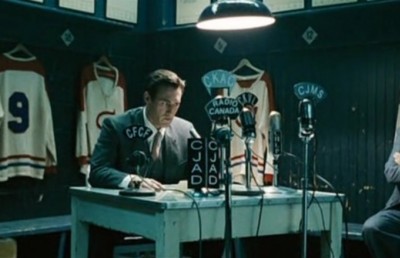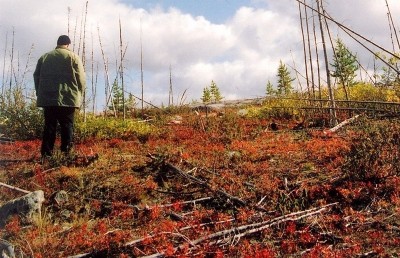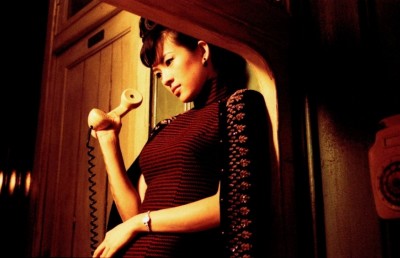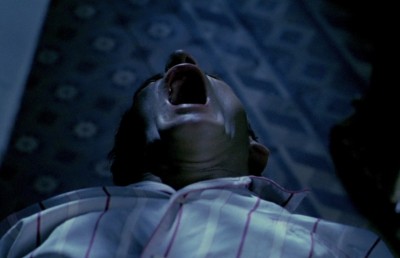Another Time, Another Place The horrific, the fantastic and the fairy-like in the films of Agustín Villaronga
Spain's Enfant Terrible
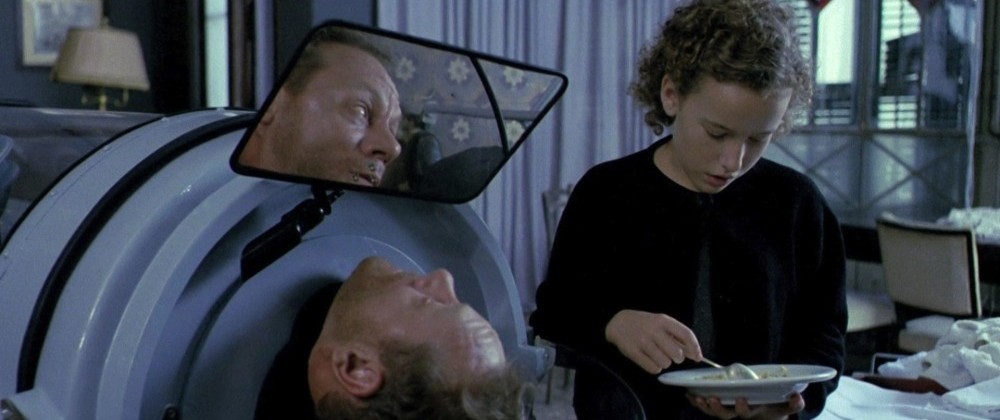
“Only the fantastic can be truthful” (99.9)
Berlin film festival, 2000. The screening of The Sea (El mar) has left most of the audience aghast. An embarrassed silence pervades the press conference room. Then, a journalist gets up and asks director Agustín Villaronga – tall, pale, dressed in black – if, given the amount of blood splattered in the film, he has a vocation for vampirism. Bewildered at first, Villaronga nonetheless accepts the provocation. His answer is bland, yet emblematical. “I don’t have any sympathy for blood, nor do I feel like a vampire; yet The Sea has to do with horror.”
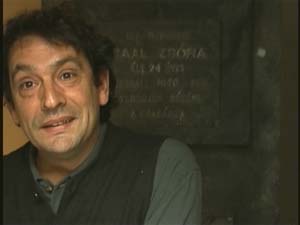
A peculiar destiny accompanies the Majorca-born director since his debut, In A Glass Cage (Tras el cristal, 1986), which shocked critics and audiences alike, rapidly becoming a cult phenomenon due to its “extreme” imagery and storyline. Villaronga’s films are too harsh for festivals, where the director’s trademark grand-guignol excesses and unpleasant themes are met with perplexity and irritation, making him a sort of marginal auteur: Spanish “art” cinema, to foreign critics, is best (and most safely) represented by Julio Medem’s solipsistic narrative puzzles, not to mention Almodovar’s frozen homoerotic melodramas. On the other hand, films like Moon Child (El niño de la luna, 1989) or even 99.9 (1997) are not exactly the stuff Fangoria readers die for: and most horror devotees who purchased a copy of In A Glass Cage because of its growing cult status as “one of the most shocking films ever made,” were probably left with their jaws wide open in disbelief after discovering that the movie revolved around the perverse relationship between a pedophile Nazi confined in an iron lung and his adolescent male nurse, who had been repeatedly molested by him in a concentration camp. Better turn fast to the nearest copy of Alejandro Amenabar’s The Others, or Jaume Balaguero’s Darkness.
But Villaronga does not make horror films – not even 99.9 is, despite dealing with witches, supernatural phenomenon and people who try to communicate with the dead. Villaronga makes films that have to do with horror. Which is a quite different matter. One of the recurring themes in his work, for instance, is the moment when purity meets madness and monstrosity, becoming irreparably infected, and starting an irreversible mutation. In the opening sequences of The Sea, children discover the horrors of civil war by watching a summary execution which takes place in a cemetery: this event changes their lives forever, with unpredictable and lasting effects. But individual horror is never detached from the horror of history: Nazism (In A Glass Cage), Spanish civil war (The Sea), 1956’s Soviet invasion in Hungary and the violence perpetrated by general Lucas García in Guatemala in the ’70s (Aro Tolbukhin – In the Mind of a Killer, 2002).
In The Sea a character says: “Blood is always scandalous, but you’ll get used to it.” Villaronga does not avoid blood and gore: on the contrary, he pushes them to the limit, so as to show their obscenity and thus avoid the torpor that comes with habit and acceptance. A good example is The Sea??’s climatic, upsetting final lovemaking scene between the two protagonists, which comes off as a sort of cross between Pedro Almodovar’s ??Matador (but devoid of the latter’s tongue-in-cheek references to Duel in the Sun) and Jörg Buttgereit’s Nekromantik 2. In Villaronga’s films the wounded and bleeding bodies are young, hairless, pulsating with life. One of ??In A Glass Cage??’s most infamous scenes has the camera observe a young boy’s chest as it contracts and expands under the action of lungs: you can almost see the air being inhaled and exhaled, just before his murderer cuts the boy’s throat and blood spills down onto the chest. The flowing blood is fluid and scandalous, because it takes away strength, childhood, and turgidity. The bright red blood disfigures the pale, lunar complexion of the slaughtered Ephebes.
Nevertheless, the dreadful and the extreme rub shoulders with a childlike languidness and an escapism that brings to creation fairy-like, contorted fantastic worlds. Villaronga’s cinematic universe is quite close to the Fantastic, even though in the director’s filmography there are only two films that fully belong to the genre, in the Todorovian sense of the term. Moon Child is “an almost abstract reworking of several classic adventure yarns for children, by such authors as Emilio Salgari, P. C. Wren, and H. Rider Haggard,”1 while 99.9 is a mystery with supernatural undertones. Both are generally considered minor works: Moon Child drowned at the box office despite winning three Goya prizes (Villaronga returned behind the camera only six years later with the controversial TV movie El pasajero clandestino, based on a Georges Simenon novel), whereas 99.9 was more of a for-hire job than a heartfelt project. Nevertheless, they are absolutely atypical compared to the artistic and commercial tendencies of contemporary Spanish cinema, which gradually resurfaced to international markets after the illusory “golden age” of late Franchism, with a craftiness and a magniloquence that borrow heavily from American models. 99.9 is the least personal of the two. After the flop of Moon Child and the unfortunate experience of El pasajero clandestino, for the first time Villaronga worked on a pre-existent script (by Lourdes Iglesias and Jesús Regueira) which probably did not satisfy him wholly. When he introduced the film at the Toronto Film Festival in 1998, the director admitted he left aside several elements of the plot which didn’t interest him and concentrated on others: as a result, several narrative paths are left unexplored. Apparently, 99.9 belongs to the new wave of ‘90s Spanish horror: the decade of aesthetic homologation to hegemonic Hollywood patterns. But Javier Aguirresarobe’s exquisite cinematography, which fills the screen with variations on the color blue, never overcomes the acting and plot, unlike many films of the period. What’s more, Villaronga is patently uncomfortable with stolid horror movie clichés. Thus, he simply doesn’t care about them. A significant example is the anticlimactic use of gore: the opening sequence in 99.9 is as astonishing as it is misleading. It’s night: a man, stark naked, runs into a country cemetery; someone or something unknown (represented through a serpentine steadicam P.O.V. shot) is chasing him. The man climbs over a wall, missteps and falls over a spiked fence, in a moment worthy of Lucio Fulci’s Black Cat: but horror buffs who look forward to a series of delightful gory highlights will be disappointed. From then on, 99.9 becomes a slow, cold, contemplating affair, which offers little or nothing in terms of horror audience expectations.
Populated by living people obsessed by the dead, 99.9 is a sort of modern folk yarn with “a distant yet morbid look at the so-called “deep Spain” dominated by superstition, religious fanaticism and a gloomy primitivism.” [2] These themes aren’t new to Spanish horror, as shown by such films as El bosque del lobo (1969, Pedro Olea), A Candle for the Devil (Una vela para el diablo, 1972, Eugenio Martin) and most of all Memorias del ángel caído (1996, Fernando Cámara and David Alonso). Even more than the latter, Villaronga’s film represents the trait d’union between two phases in fantastic Spanish cinema (the narrative formulas which dominated the genre until the early 1980s and the cinephile, self-assured approach of younger filmmakers) as well as their overcoming, by showing a third way to the genre. Villaronga seems attracted to the grotesque, filthy side of horror: the scene in which the elderly Dolores (Tevele Pavez) takes off her pants and forces them into Maria Barranco’s mouth so as to gag her, is a truly outstanding moment. It makes a pair with the scene in In A Glass Cage, where Griselda (Marisa Paredes) runs into her room to escape from Angelo (David Sust) and her sock slips down her leg: she bends to adjust the garter, thus inadvertently revealing her naked leg to the eyes of her persecutor, in a moment of intimacy malevolently revealed and violated.
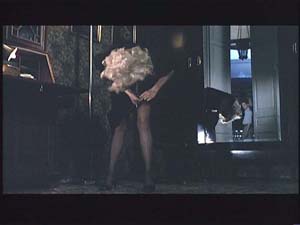
Pavez, with her knee-long socks and animal-like moves, is a bruja, a witch who conveys a repulsive, putrescent sensuality: the sabbatic ritual, in which the old hag caresses her young grand-daughter’s (Ruth Gabriel) thighs while uttering obscenities, is the most genuinely terrifying moment in the whole film, as it evokes the image of a popular-like, gynocentric magic, filthy and mock-religious (the woman dominates her succubus with a mixture of water and urine, kept inside a bottle shaped as the Virgin Mary), which deeply relies on sex. The central theme of 99.9 is the encounter (or, rather, the clash) between different sexualities: Lara (Maria Barranco) investigates her former lover’s death but in the meantime tries to look back on her own submissive relationship with the man; the homosexual artist Simón (Simón Andreu), who had a sadomasochistic liaison with the deceased, says: “I mix pain with sex, but in private, whereas others mix it with religion, in public”; the two witches convey a vampiric, animal-like sexual frenzy. It’s not surprising that 99.9 was such an isolated occurrence.
If In A Glass Cage labelled Villaronga as the enfant terrible of Spanish cinema, dealing with such themes as pedophilia, Nazism and voyeuristic fascination towards evil, his second film, Moon Child, seems almost a perverse retelling of the debut feature, whose vague fairy-like tones are emphasized and turned upside-down. It’s undoubtedly not less scandalous. Once again, it deals with an obsession, which is even more disturbing than that of Angelo (David Sust), the male nurse and torturer of In A Glass Cage, because little David (Enrique Saldana) nourishes and shelters it with his own innocence, something that Angelo had already lost forever. Moon Child is a fairytale for adults, just like Lord of the Flies or A High Wind in Jamaica; and its young hero is a little Cronos who eventually kills his own “brother” to be the one and only “moon child,” the semi-god with supernatural powers who will rule over a Central African tribe and whose advent will be announced by a fire epiphany in the sky. Moon Child exudes an air of indefiniteness, wavering between a natural and a supernatural explication for the events on screen: all of them (coincidences and human actions, escapes and agnitions, murders and suicides) conspire to remove the obstacles to the prophecy that an old nurse tells David in the opening scene. Moon Child is filled with symbols and esoteric references, from the insistent recurrence of the circular shape (an eye, a tunnel, a wheelchair, a plate that dissolve into the image of the full moon, with an almost hypnotic use of cross fades), to the many pagan and pantheist rituals, as in the scene in which Edgar (David Sust) impregnates Georgina (Lisa Gerrard) inside a temple/observatory, with the woman lying on an altar, her nude belly caressed by moon beams. Yet, its fantastic quality lies elsewhere, in what is perhaps the most intimate and peculiar trait in Villaronga’s oeuvre: the will to elude the boundaries of space and time, and run away from History and its horrors.
With respect to In A Glass Cage, the references to Nazism and concentration camps did not spoil the picture’s disquieting, timeless quality. According to Carlos Diaz Maroto, “the movie is seemingly set in mid-1950’s Spain –even though the maid is paid with a disproportionate amount of money– yet it remains indefinite, thus existing in a time and a space of its own.” [3] The villa where former Nazi officer Klaus (Günter Meisner) spends the rest of his days confined in an iron lung gradually turns into a stylized space, the stage for a performance: barbed wire and unreal lighting create a set piece which borders on abstraction, while heavy curtains rise and fall –take for instance the scene of Griselda’s (Marisa Paredes) murder– as a frame to the characters’ actions and moves.
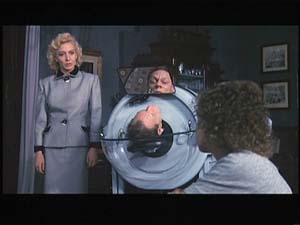
Moon Child conveys the same indeterminateness. Despite the long distance that the film’s characters cover, Villaronga creates a suffocating, claustrophobic universe. The mysterious Centre in which the story takes place is an impotent, marmoreal monster made of gigantic stairways, balustrades, refectories and corridors that make its inhabitants seem Lilliputian in comparison. It’s a sort of boarding-school for children with paranormal powers where rooms and surroundings are inside each other like in a Chinese box: in a scene, little David watches the Centre’s huge salon below him, which has been turned into a labyrinth through a series of screens, with people moving inside as if they were lab mice. It’s an image which owes as much to The Shining as to the dormitory sequence in Dario Argento’s Suspiria, which Villaronga’s film recalls in its use of décor as well as in the reinvention of archetypes from fairytales. The Centre is a sort of enchanted castle, with hiding-places and secret passages (the local vent through which David and his two friends escape), inhabited by ogres and witches —the men in black led by the Directora, played by Lucia Bosé— only a magic key like the one Victoria (Maribel Martin) gives David can open the door to freedom. And if the destination the little boy dreams of is visualized through illustrations and maps in a XIX century tome, the outside world that awaits him has the stereotyped and oneiric appearance of a 1940s exotic adventure flick. The sequence set on a Mediterranean dock, where a multiethnic crowd is waiting to sail to Africa, looks like it’s been borrowed from an old RKO programmer (a similar moment can be found in El pasajero clandestino, which calligraphically pays homage to the American film noir). It’s a universe in which distances seem to shorten and deform at will, allowing characters to pursue and find each other with no apparent effort. Once again, Villaronga fills the film with allusions to Nazism: but the esoteric congregation held by Lucia Bosé, whose ultimate purpose is to create a superior human being, seemingly refers to Himmler’s Deutches Ahnenerbe, an initiatory sect and a stronghold of esoteric Nazism. Perhaps, in the deterministic and escherian universe of Moon Child, Hitler did win the war, as in P.K. Dick’s Man in the High Castle.
Set in early post-WWII Spain, The Sea nonetheless is quite strange and elusive. The first ten minutes show a country torn apart by civil war –shown in a very different way than in many contemporary Spanish films, where it’s transfigured and kind of embellished: Julio Medem’s Vacas comes to mind. But the Caubet sanatorium in which the story takes place is nothing short of a limbo, halfway between this world and the beyond. A place where time has stopped, and the echoes of Franco’s dictatorship are filtered through the radio and old magazines, like in a huge aquarium, where people nourish their own dreams and hopes, idols (bullfighter Manolete) and obsessions. There is a forbidden room, No. 13, where the terminally ill are brought to die: and you can notice it by listening at the sound of the litter through the empty corridors at night. Meanwhile, other patients (all of them young, many adolescents with no hair on their chest) feel life flowing away, day by day. They wait. And dream of The Sea: a place of silence and purity, an ideal return to their mother’s womb, to an innocence they have irreparably lost. Villaronga said about the film: “In The Sea there is no fascination towards evil, unlike In A Glass Cage. Here, evil is already inside.” And it’s expectorated, revealed through tattoos and mutilations, exorcised with delirious rituals in which mysticism becomes obsession and a self-punitive frenzy.
The main theme of Aro Tolbukhin. In the Mind of a Killer is the contraposition between realism and fantastic. The first half is a stunningly recreated fake documentary about a fictional serial killer who murdered pregnant women in Guatemala in the late 1970s before being imprisoned and condemned to death; the second part, which recreates Tolbukhin’s mysterious past, is shot in a marvellous black and white and is permeated by a dreamlike atmosphere which comes very close to Henry James (in 1999 Villaronga played an important role in El celo by Antoni Eloy, an umpteenth retelling of Turn of the Screw). Aro Tolbukhin is once again the story of an obsession and an escape: Tolbukhin runs away from his own past, wandering from Hungary to South America, where his madness eventually leads him to murder. But the assumption (following Aro’s moves in a docufiction style, interviews with his acquaintances and re-enactments of his murders) is continually contradicted by a net of symbols (the crucifixes and broken mirrors in which Tolbukhin sees his own image reflected) which gradually show the impossibility of revealing the truth through the mere inquiry of people’s actions. The reason for Aro’s insanity can be deciphered only by trying to penetrate inside his mind, and this demands the instruments of the Fantastic. The scenes of Tolbukhin’s childhood are both fairy-like (Aro and his twin sister Selma hide in a hollow tree to escape from the outside world) and sinister (the children are obsessed by the presence/absence of their dead mother, who they think is still alive and confined to her room), and prepare the transition to sensuality (the two siblings commit incest), martyrdom and eventually death. The magnificent sequence-shot that ends the film shows Aro jump from the window in his own room, only to end up on a bed in a Guatemala mission, twenty years later. Once again, the only chance is to escape. In another time and place, following the mirage of a new life.
Villaronga’s In a Glass Cage is available in a “Special Edition” DVD from Cult Epics
Endnotes
1 Carlos Diaz Maroto, Agustín Villaronga. La turbiedad de la imagen, “Protesis” n. 3, Madrid, April 2004, p. 38.
2 Antonio José Navarro, 99.9, “Nocturno Dossier” n. 21, April 2004.
3 Maroto, Agustín Villaronga. La turbiedad de la imagen cit., p. 37.



